Do you have a question about the Panasonic TX-40DS500B and is the answer not in the manual?
General guidelines for servicing the TV, emphasizing safety and proper installation of protective devices.
Detailed steps for measuring touch current to prevent electric shock hazards after servicing.
Essential techniques to minimize component damage caused by electrostatic discharge (ESD).
Recommendations for lead-free solder types suitable for use in TV manufacturing and repair.
Diagram illustrating the location and function of main circuit boards (A-Board, P-Board, K-Board).
Step-by-step instructions for safely removing the TV's pedestal assembly.
Procedure for safely removing the TV's backcover for internal access.
Details on feature keys (DTCP-IP, HDCP2, Netflix, etc.) and their generation process.
Guidelines for replacing critical ICs like sLD8A and NAND FLASH, including SELF CHECK.
Table mapping TV models to supported features and their corresponding keys.
Test points and expected voltage values for A-board and P-board for setting verification.
Instructions on how to access the TV's service mode using the remote control.
Procedure for safely exiting the TV's service mode.
Steps to enter the Service Tool Mode from the main Service Mode menu.
Explanation of the SOS History display, indicating LED blinking patterns for error codes.
Information on viewing cumulative power ON time and switching counts.
Instructions on how to exit the Service Tool Mode.
Explanation of the Hotel Mode function, used to restrict TV features in hotel environments.
Command sequence required to enter the Hotel Mode setup menu.
Description of items and functions available within the Hotel Mode setup menu.
Procedure for copying setting data to USB for A-board replacement.
Procedure for copying setting data to USB for mass hotel installations.
Steps to prepare a USB memory stick with the correct startup file for data copy.
Description of option byte settings for OPTION1, controlling various TV functions.
Description of option byte settings for OPTION2, related to sound and broadcast systems.
Description of option byte settings for OPTION3, covering features like NICAM and SSU search.
Description of option byte settings for OPTION4, including noise reduction and CAM workarounds.
Description of option byte settings for OPTION16, related to PIP and sound menu features.
Instructions for accessing the self-check feature for diagnosing TV issues.
Method to exit the self-check diagnostic mode.
Objective of the LCD Panel Test Mode for identifying failure points.
Instructions on how to activate the LCD Panel Test Mode.
Procedure to exit the LCD Panel Test Mode.
Method for judging failure points based on test patterns displayed.
Important notes regarding the LCD Panel Test Mode and its test pattern generation.
General guidelines for servicing the TV, emphasizing safety and proper installation of protective devices.
Detailed steps for measuring touch current to prevent electric shock hazards after servicing.
Essential techniques to minimize component damage caused by electrostatic discharge (ESD).
Recommendations for lead-free solder types suitable for use in TV manufacturing and repair.
Diagram illustrating the location and function of main circuit boards (A-Board, P-Board, K-Board).
Step-by-step instructions for safely removing the TV's pedestal assembly.
Procedure for safely removing the TV's backcover for internal access.
Details on feature keys (DTCP-IP, HDCP2, Netflix, etc.) and their generation process.
Guidelines for replacing critical ICs like sLD8A and NAND FLASH, including SELF CHECK.
Table mapping TV models to supported features and their corresponding keys.
Test points and expected voltage values for A-board and P-board for setting verification.
Instructions on how to access the TV's service mode using the remote control.
Procedure for safely exiting the TV's service mode.
Steps to enter the Service Tool Mode from the main Service Mode menu.
Explanation of the SOS History display, indicating LED blinking patterns for error codes.
Information on viewing cumulative power ON time and switching counts.
Instructions on how to exit the Service Tool Mode.
Explanation of the Hotel Mode function, used to restrict TV features in hotel environments.
Command sequence required to enter the Hotel Mode setup menu.
Description of items and functions available within the Hotel Mode setup menu.
Procedure for copying setting data to USB for A-board replacement.
Procedure for copying setting data to USB for mass hotel installations.
Steps to prepare a USB memory stick with the correct startup file for data copy.
Description of option byte settings for OPTION1, controlling various TV functions.
Description of option byte settings for OPTION2, related to sound and broadcast systems.
Description of option byte settings for OPTION3, covering features like NICAM and SSU search.
Description of option byte settings for OPTION4, including noise reduction and CAM workarounds.
Description of option byte settings for OPTION16, related to PIP and sound menu features.
Instructions for accessing the self-check feature for diagnosing TV issues.
Method to exit the self-check diagnostic mode.
Objective of the LCD Panel Test Mode for identifying failure points.
Instructions on how to activate the LCD Panel Test Mode.
Procedure to exit the LCD Panel Test Mode.
Method for judging failure points based on test patterns displayed.
Important notes regarding the LCD Panel Test Mode and its test pattern generation.
| Screen Size | 40 inches |
|---|---|
| Resolution | 1920 x 1080 pixels |
| Display Type | LED |
| Smart TV | Yes |
| HDMI Ports | 3 |
| USB Ports | 2 |
| Audio Output | 20W |
| Wi-Fi | Yes |
| Ethernet | Yes |
| Backlight Technology | Direct LED |
| Refresh Rate | 50 Hz |
| VESA Mount Compatible | Yes |
| Energy Efficiency Class | A+ |


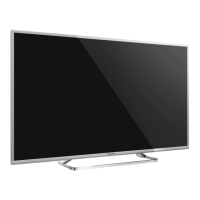
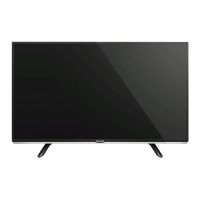

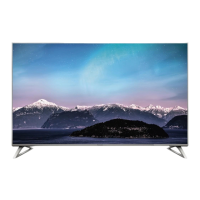
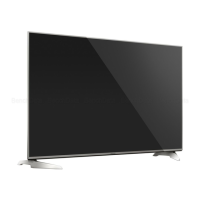
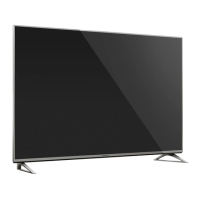
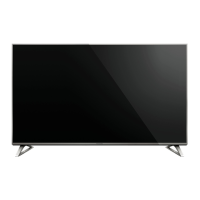
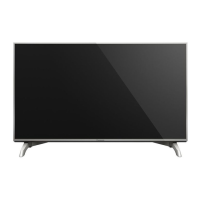
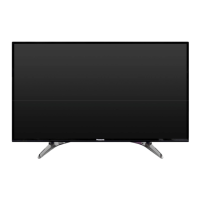
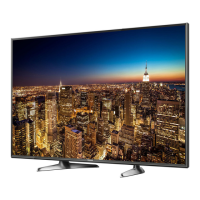
